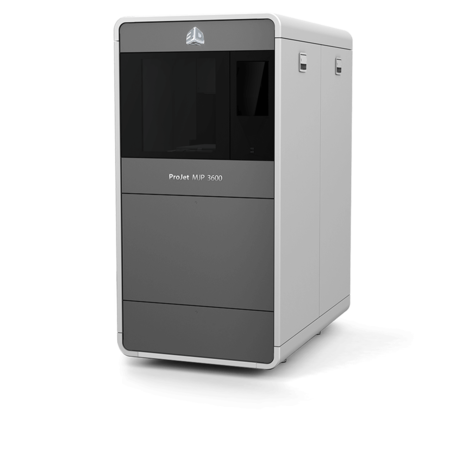In the early 1990s, Alessi’s designers switched from a two-dimensional to a three-dimensional design process using plastic prototypes to obtain a more realistic view of the complex parts that make up its innovative designs. As the demand for Alessi’s products continues to grow, so did the designer’s need for a faster, more reliable way to create plastic prototypes.
“At the end of 2004, we began to explore the various options for an in-house rapid prototyping system,” says Cristiano Colosio, CAD Manager at Alessi (Crusinalli, Italy). “We evaluated a range of printers, but what impressed us with the 3D Systems’ MJP (Multi Jet Printer) 3D Printer was the high quality of the prototype’s form and the ease of cleaning the parts compared to the competing systems.”
Alessi looked for a system that was cost effective - both in terms of the initial investment and on-going maintenance. Alessi also required a solution that was simple to operate, automatic, non-restrictive, and compatible with its existing office environment. The 3D Printer from 3D Systems also met the company’s stringent quality requirements for models, surface finish, and most importantly, producing the minute details that make the Alessi designs, renowned by consumers around the world.
In the first nine months after the installation of the 3D Printer Alessi created more than 600 prototypes of all sizes, ranging from small model teaspoons to large 150mm teapots. To date, the 3D Systems Printer has logged approximately 3,000 hours of operation or an average of 15-16 hours per day.
“The 3D Printer fully met our expectations immediately,” says Mauro Casalino, Model/Prototype Manager at Alessi.” And the VisiJet Material we use in the printing is very robust, and prototypes have long life spans.”
In early 2005, Alessi decided to completely re-engineer the technical design of one of its top products - the Cupola coffee-maker - a favorite of Alessi customers for 15 years. The goal was to optimize the product to meet current demands in the changing coffeemaker market.
Six different prototypes were made using the 3D Systems Printer during the company’s various design phases. Many samples were also used for functional tests of the Cupola’s five component assembly, the heating element and body, the assembly of standard metal parts inside the collector. The models printed were also critical to perhaps the most important test of all: pouring.
“It was very interesting to come to understand the lip that poured the coffee the best,” Colosio says. “During the tests, we varied some parameters, and in few hours we had a new sample that reflected the latest changes. All that remained was to make a prototype in metal.”
“The new ‘la cupola’ model had to be in line with the design classic on the market for so many years,” Colosio adds. “The ability to place the prototype side-by-side with the older model and compare the different versions made our job a lot easier. Visual control is extremely important.”
Alessi’s designers and model-makers have a wide-range of improvements by using the 3D Printer in-house, including higher productivity and a significant improvement in communications between the two groups throughout the world.
“The total time savings, representing about 5-6 weeks per product, allows us to speed up all our processes and increase efficiency, not to mention the financial savings: it now costs us 70 percent less to make a prototype than it did before we had a 3D Printer in-house,” Casalino concluded. “Now, we cannot live without it, because of the freedom it has given us.”
